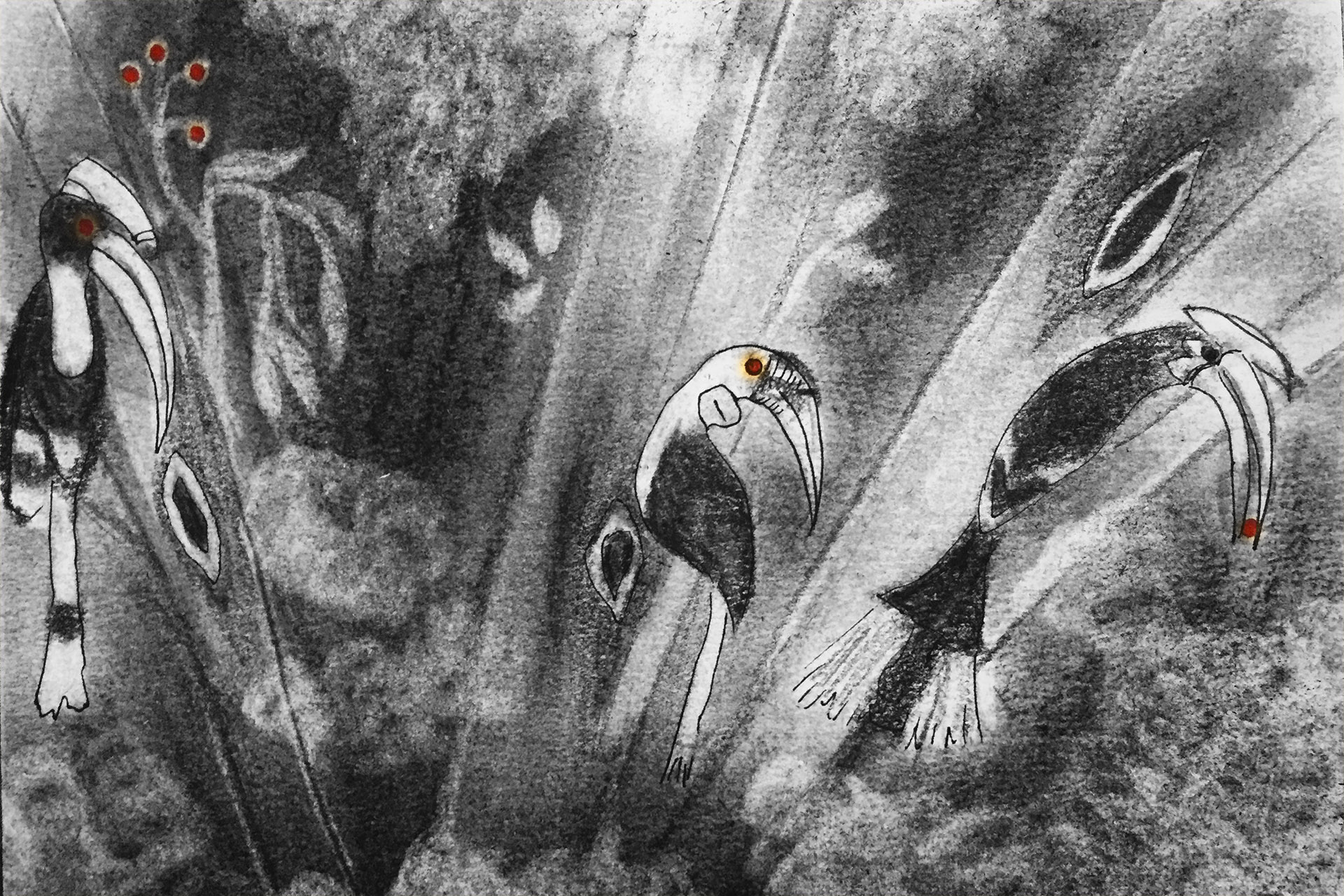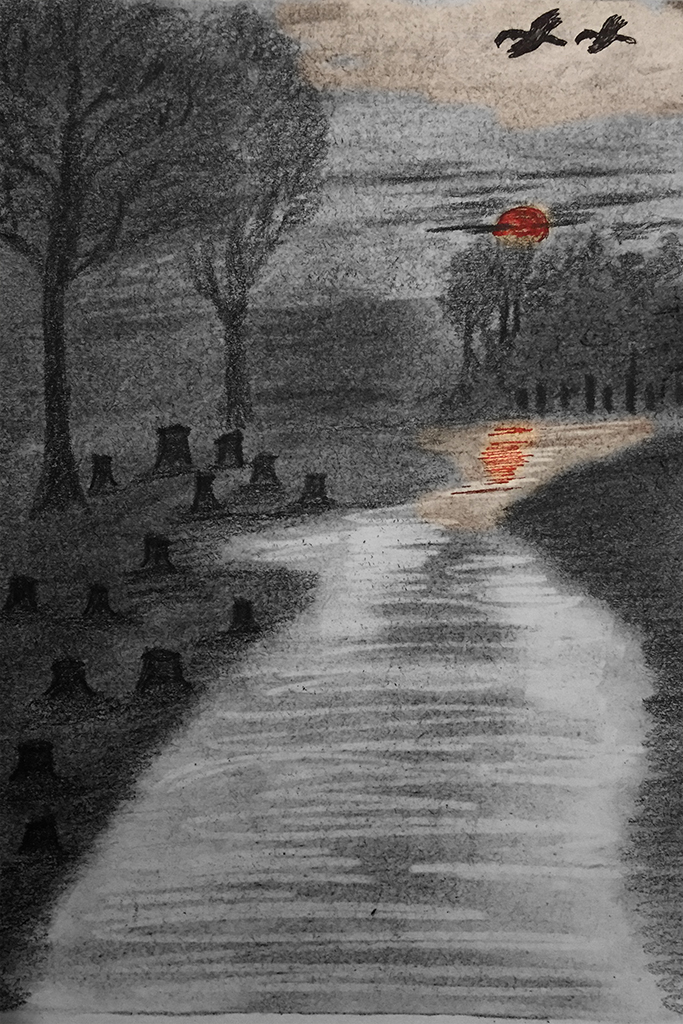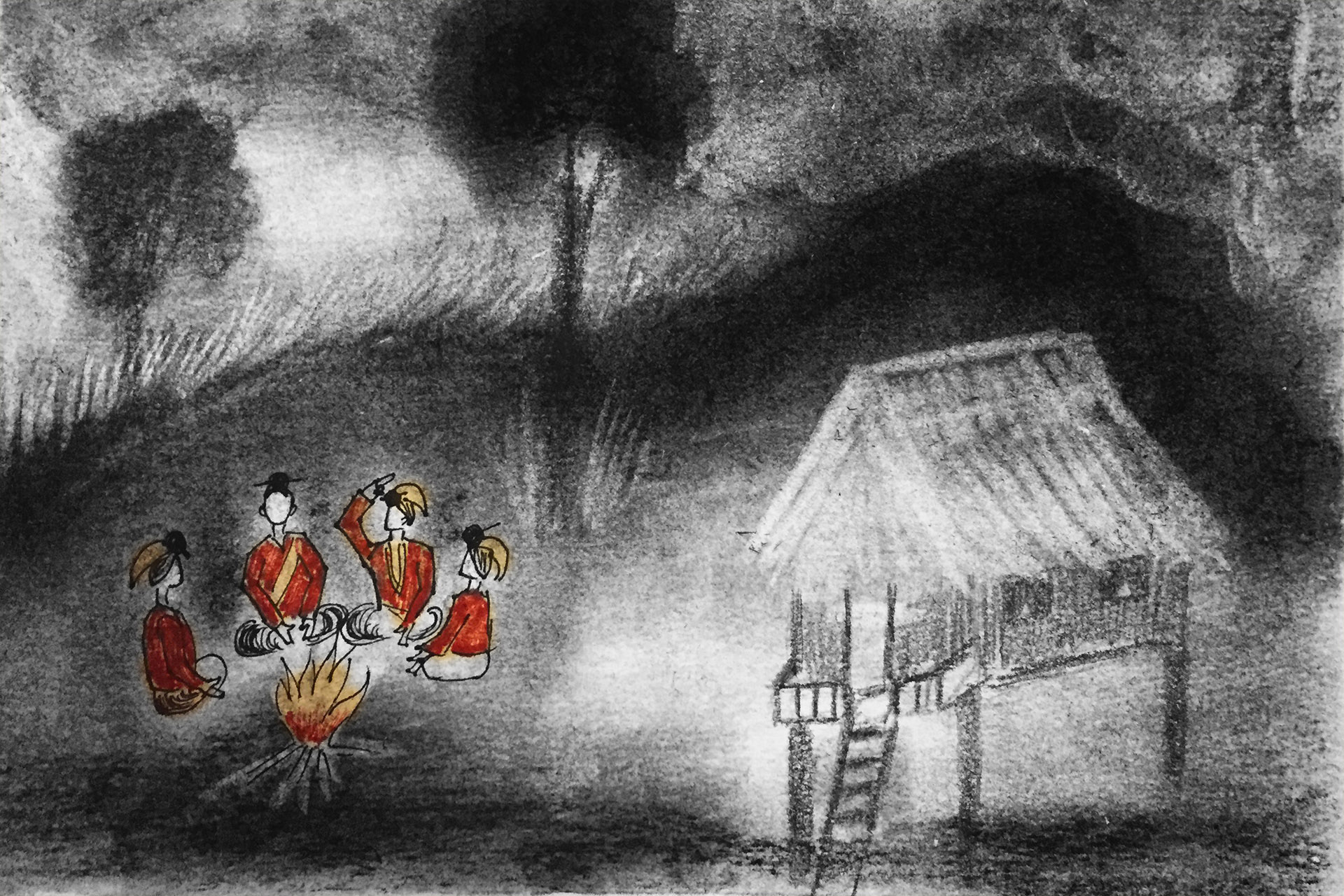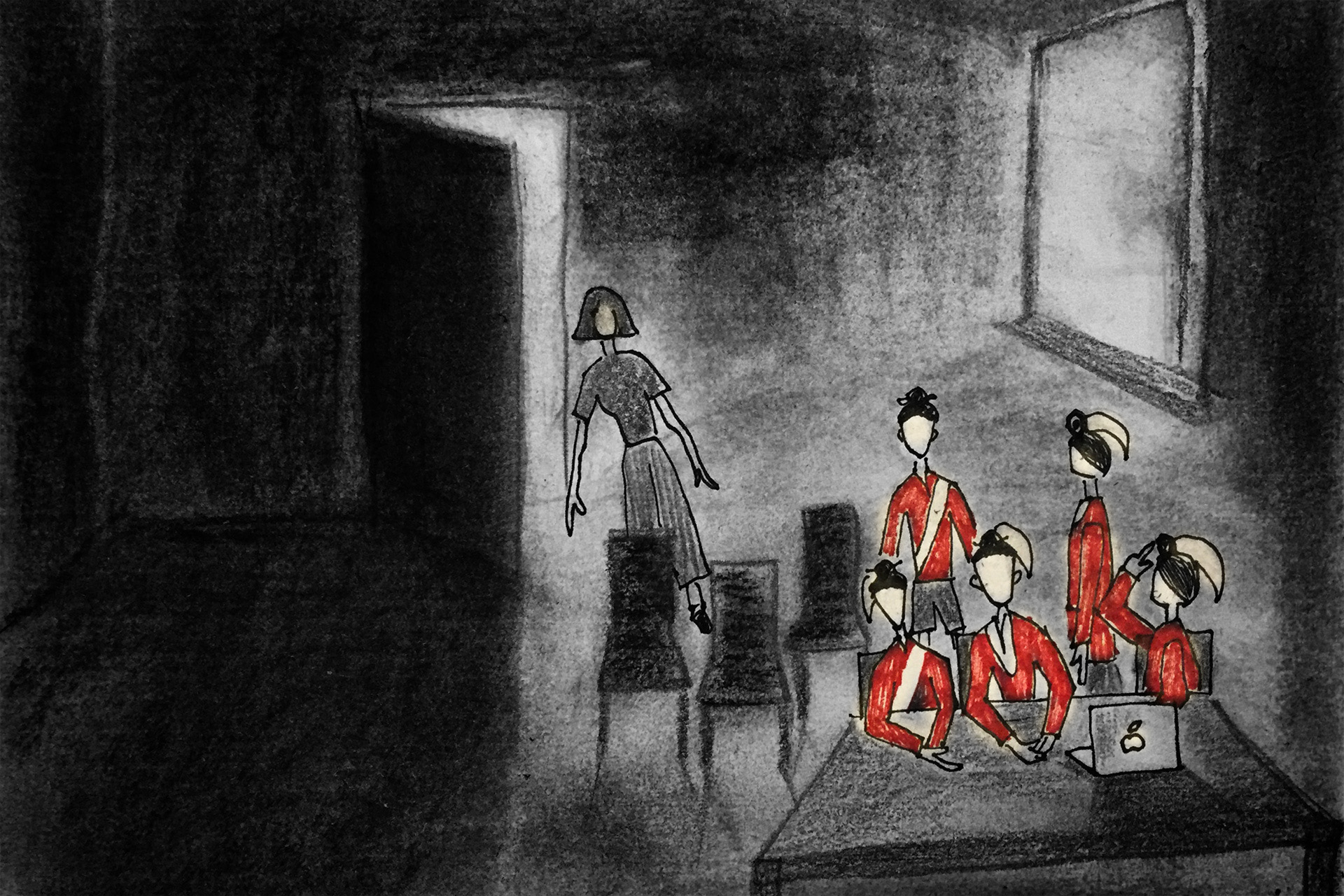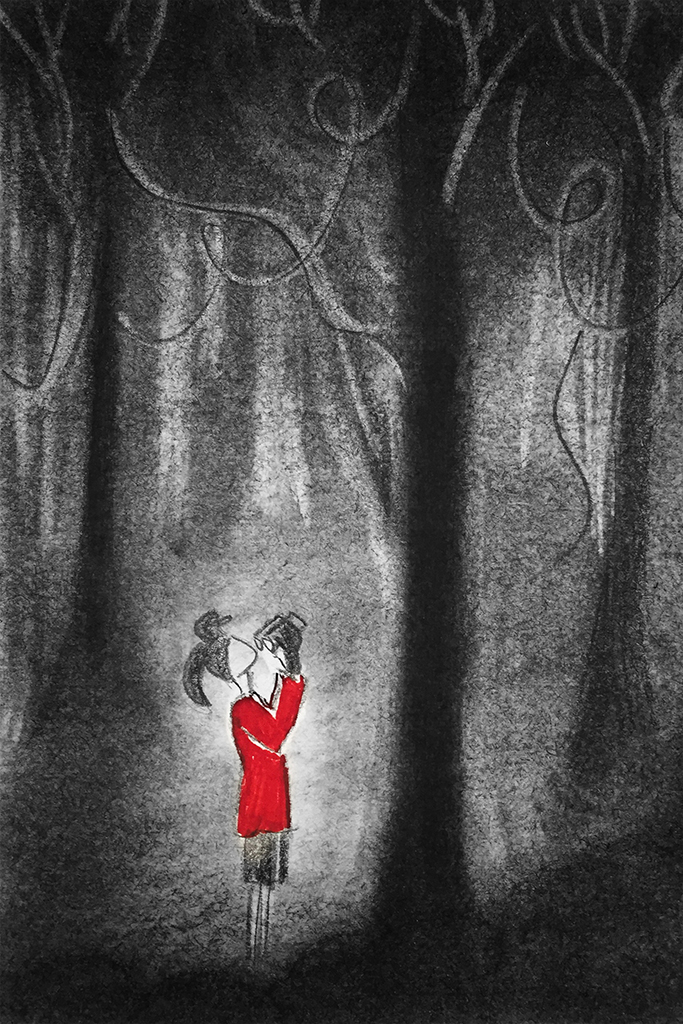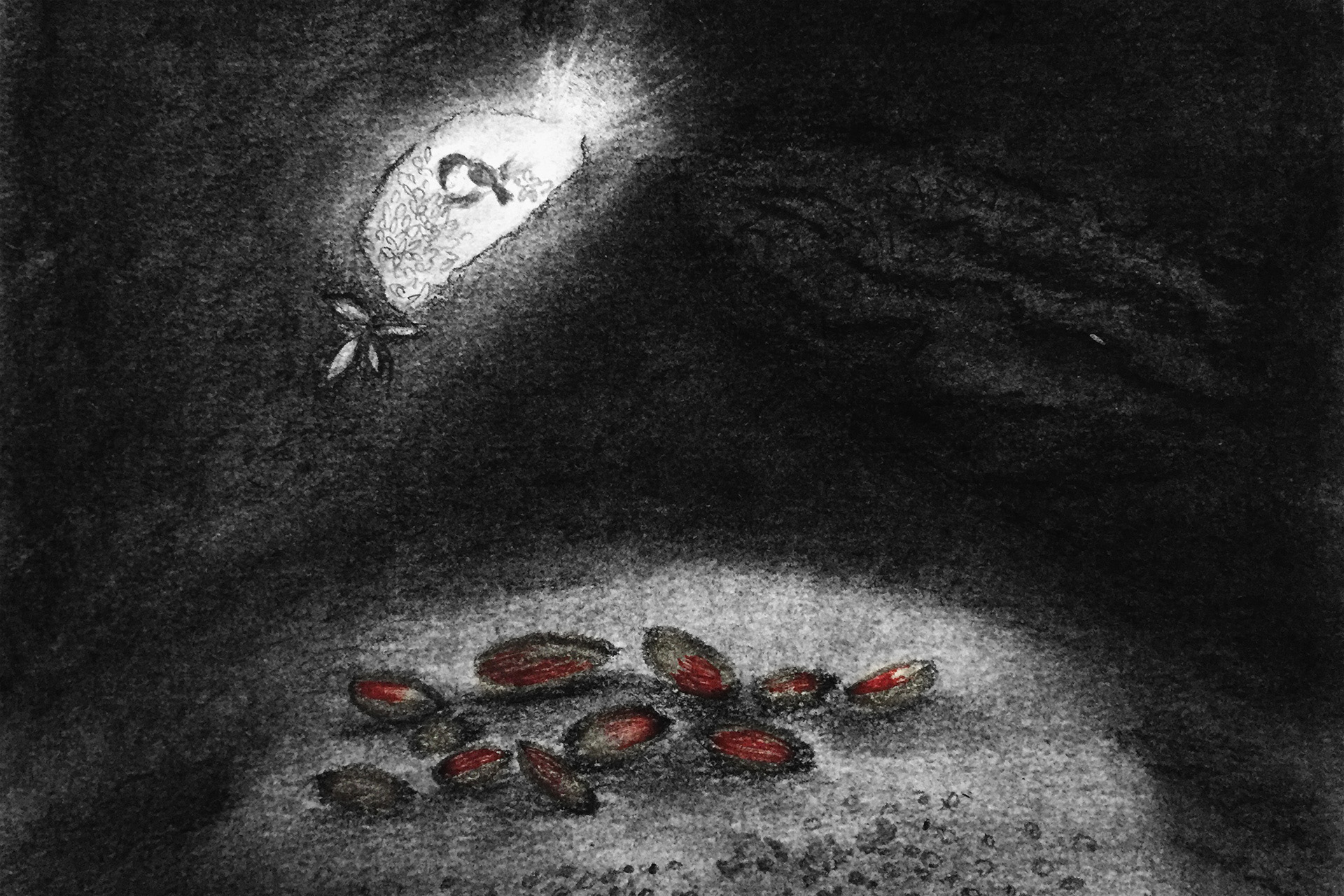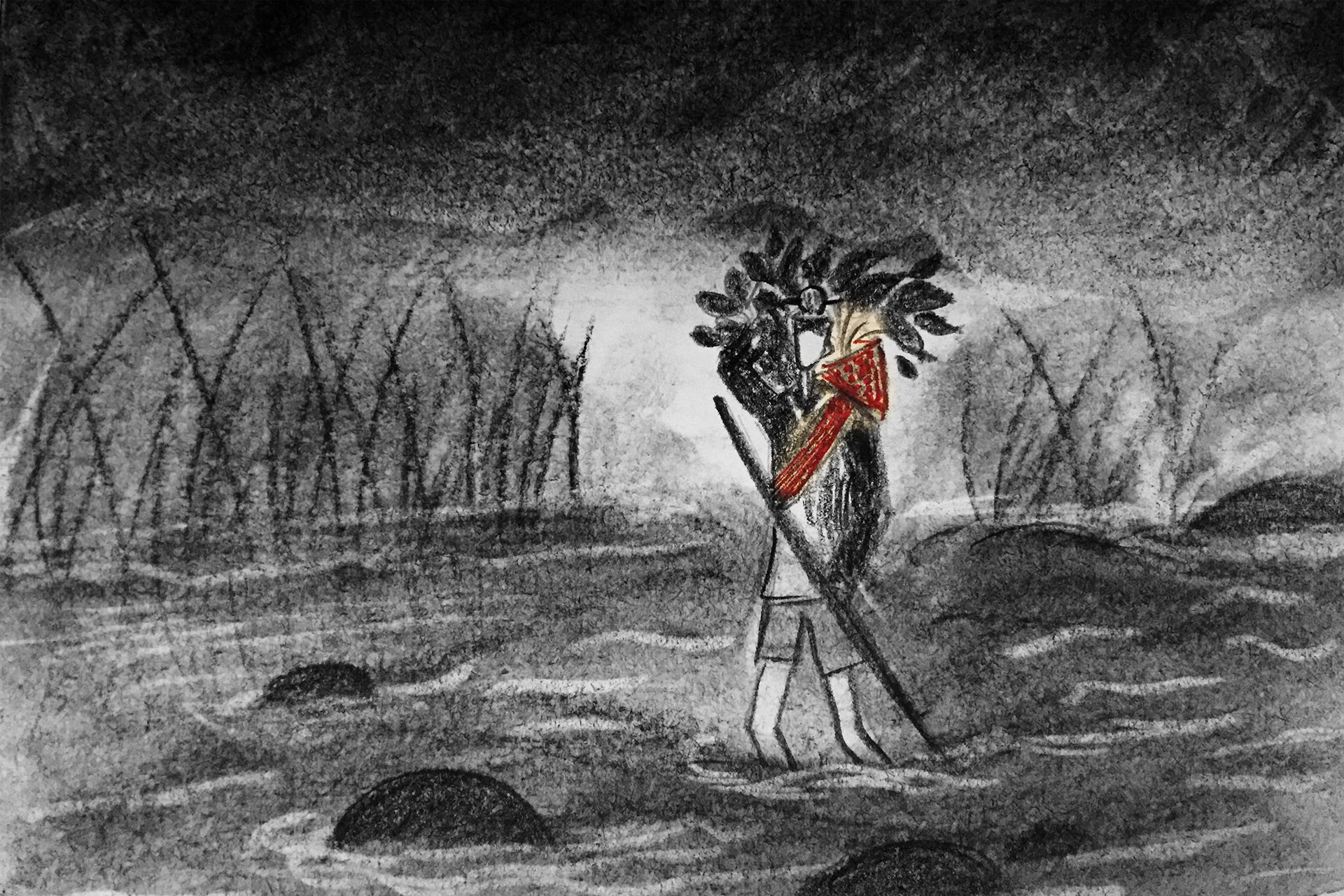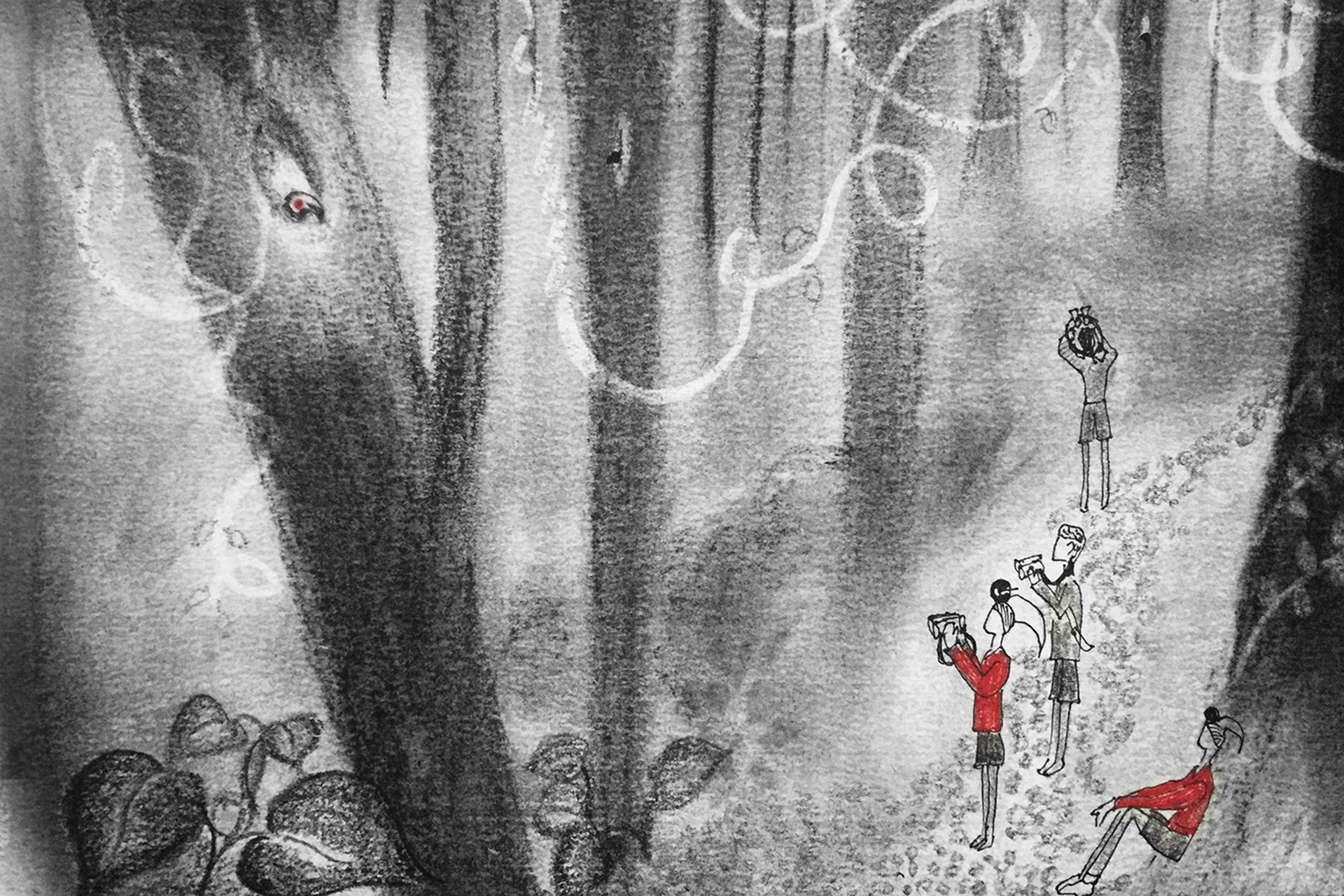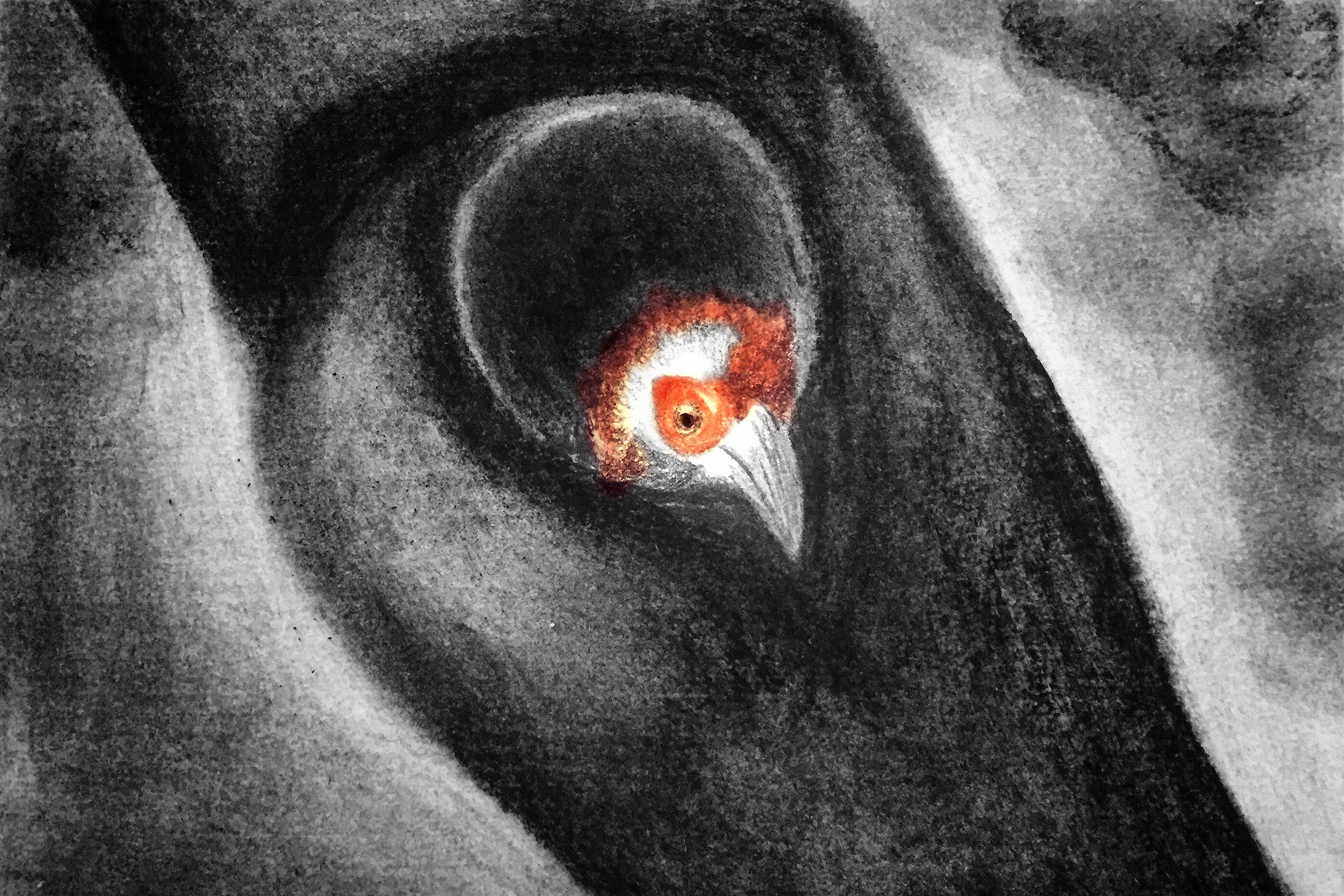Armed with her sketchbook, Arati Kumar-Rao chronicles her visit to Pakke Tiger Reserve, Arunachal Pradesh, where the Hornbill Nest Adoption Program (HNAP) is a community triumph.
It is April and the forests around Pakke are full of hornbill calls. Towering, white-boled, large buttressed bhelu trees (Tetrameles nudiflora) are traditionally home to three kinds of hornbills: the Great Indian, the Wreathed, and the Oriental Pied. Another species, the Rufous-necked, nests further up in the hills. For the former three species, however, the forests around Pakke are vital. And, since early 2012, they have become precious wards of the HNAP, a joint effort by the local Nyishi tribal community, the Pakke Forest Department, its dynamic Divisional Forest Officer Tana Tapi, and the Nature Conservation Foundation (NCF).
Pakke is a semi-evergreen forest covering an area of 861sqkm. Deforestation and hunting are the constant threats to the hornbill species here. The landscape on the Assam side of the border has been heavily altered and almost all the hornbill-roosting trees have been cut down. Aparajita Datta, who has been working on conservation initiatives in the region since the 1990s, remembers the thick forest with hundreds of hornbills that existed then. Now, only a couple of Silk Cotton trees (Bombax ceiba) remain for few hornbills to roost in. The deforestation serves as a clear and present warning of what the Nyishis can expect if they don’t get involved in the conservation of their forests. But since 2002, hunting has declined, thanks in large part to the cooperation from these communities around Pakke. But deforestation means increased competition among the hornbills during nesting season. While putting HNAP programme in place, Datta and her team felt that long-term nest-watching involving the communities themselves would likely protect the hornbills.
Some evenings, the Gaon Burras (village leaders) of the Nyishi tribe gather around a fire in the eco-camp that they run and swap traditional stories. These people are at the forefront of conservation efforts to protect the hornbills around Pakke. The Great Hornbill has been traditionally hunted by the Nyishis for its beak/ casque and meat; its upper beak/ casque has been a part of the traditional Nyishi headgear, called a byopa. The Nyishis in this part of Arunachal Pradesh, having understood the value of protecting the species, have given up hunting and are trying to influence Nyishis in other parts of the state to follow suit. They now wear headgear made of fiberglass.
In December, 2011, through a series of meetings and training sessions for the HNAP, NCF researchers briefed the village headmen, who then went on to become the initial batch of nest-watchers. The men were taught to record the different types of hornbills (associating English names with their own native names for the birds), locate nests in the Reserve Forests outside Pakke, keep track of when female hornbills enter the nests, and ensure that there were no disturbances.
From faltering but eager steps almost five years ago, the HNAP has come a long way. Nyishi nest protectors are now armed with cameras and new binoculars to document hornbills at their nests. The programme also goes beyond just monitoring and takes on the heft of restoring degraded forests.
Nest protectors are trained to document the diet of breeding hornbills, which clues the researchers in as to what trees and plants are preferred by the birds during breeding season. This knowledge is useful in the restoration work that HNAP conducts, which includes growing saplings in a nursery for planting in degraded patches.
A rainforest nursery established in 2014 now boasts 3,000 saplings of 25 native tree species. Planting began during the rains in May, 2016 and saplings were planted around trees in the reserve forests that hornbills nest in. The nest protectors, the village headmen, as well as locals interested in the effort, pitched in. This illustration (above) depicts spirited nest protector and village elder Tajek Wage crossing Jolly Nala, with saplings that he planted around the nest trees he protects. Two thousand of the 3,000 saplings were planted this year.
The latter part of the monsoon brings warm, fuzzy, happy, chirpy tidings. Of 22 active nests, 20 have fledged chicks. According to the HNAP report, of these, 14 are Oriental Pied Hornbill, three are Wreathed Hornbill and three are Great Hornbill chicks.
A tiny, wreathed hornbill chick peeks out of its nest as the watchers record success. Of course, as with any Herculean effort, there are numerous challenges in protecting hornbill nests and assuring nesting success. There is some bad news along with the heartening news of each fledgling. But the people of the Nyishi community nest protectors, the Forest Department, and NCF plod on. The three-pronged collaborative effort to restore the forests and the hornbill population is poised to consolidate on its gains.
Note: There are now 16 nest protectors and the programme needs a minimum of ₹10 lakh per year. If you would like to adopt a nest and help in this effort, please visit http://ncf-india.org/pages/donate or write to the coordinator Bhanu Sridharan at [email protected]
